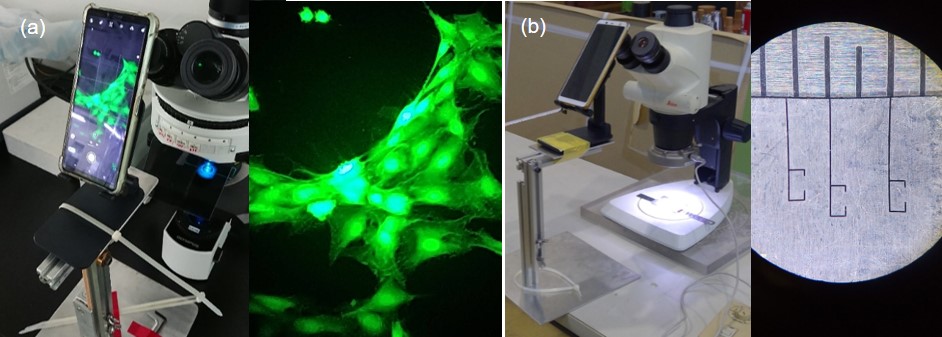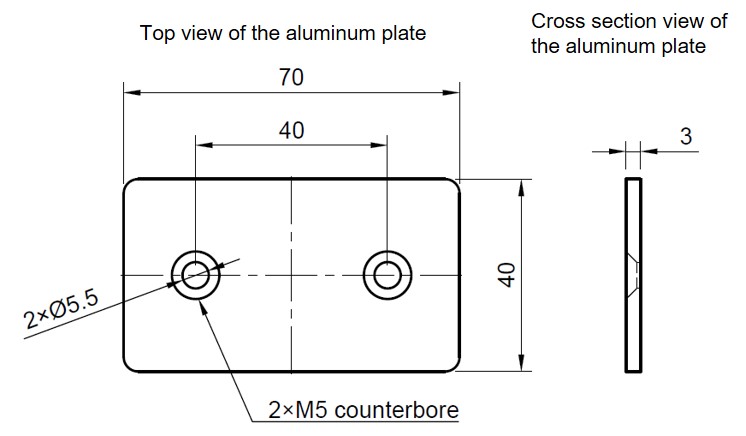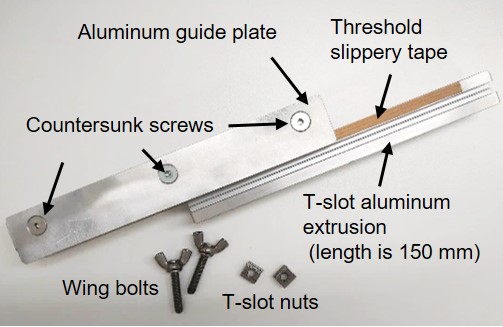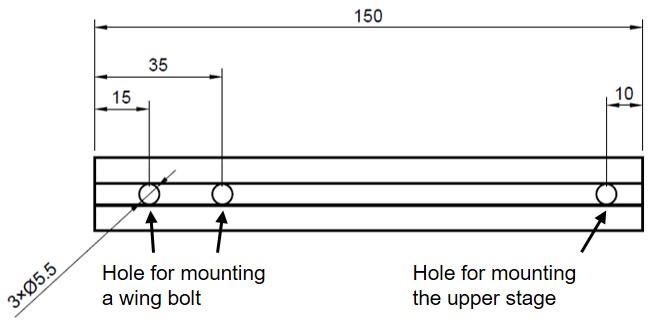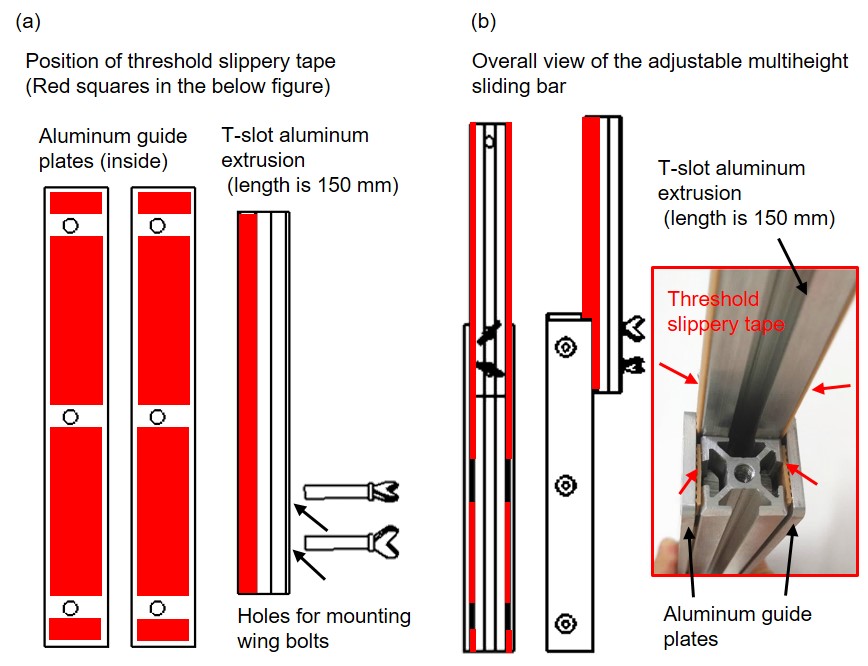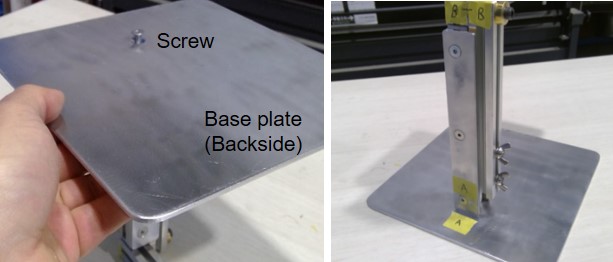Assembling simple and universal adjustable multiheight smartphone stand for lab microscopes
Haruka Honda, Noritaka Miyamoto, Hisayuki Miyajima, Keigo Yoshida, Yuichi Tanaka
Abstract
Cameras in mobile devices such as smartphones and tablets have recently been used to capture or display images from microscopes in various fields. The advantages of using these cameras are their low cost, simple operation, and the possibility of capturing high-resolution images and movies. Many commercial products can be easily attached and aligned, from smartphones to microscopes (e.g., SWIFT SPA-E28 Smartphone Adapter, LabCam and LabCam Ultra). However, suitable accessories are sometimes required depending on the type of microscope or smartphone used.
Therefore, we designed an adjustable multiheight smartphone stand. The height and position of the upper stage of this stand can be flexibly adjusted, making it suitable for various smartphone and microscope models with a single stand. It is robust, highly stable, and routinely used in laboratories, schools, and factories. We used a commercial tabletop smartphone holder on the upper stage to reduce assembly time and cost. This stand enable the capturing or recording of the object on your smartphone seen through the microscope without additional new equipment. Specifically, this stand may be useful in situations in which many people use their smartphones to capture images from a microscope, such as in laboratories, student experiments, and outreach activities.
Before start
We used robust, lightweight, and inexpensive aluminum. We recommend using aluminum for these three parts because the upper stage becomes unstable when the sliding bar reaches its maximum length. If the user is built according to this design, it can fit a microscope with a height of approximately 360–460 mm from the eyepiece to the stage (Figure (a) and (b)). The upper stage was designed for use with a tabletop smartphone holder that weighed approximately 180 g and had dimensions of approximately 70 mm × 100 mm (width × height).

Although readily available tools such as a handheld saw, band saw, handheld drill, or drill press could have been used to fabricate this stand, handling these tools is difficult for those who are not accustomed to it. Therefore, for safety purposes, we recommend using an external processing service. For example, Meviy is a metal processing service in Japan that uses only 3D data. We provided PDF and STEP files of this smartphone stand for others to use freely or modify to fit their educational or research needs.
Adjustable multiheight smartphone stand (PDF file)
https://drive.google.com/drive/folders/1Xt44FeB-D2R_zW_0F0ww5Ej5613B_TFd?usp=sharing
Adjustable multiheight smartphone stand (STEP file)
https://drive.google.com/drive/folders/1y7xmUY8Q0FshwqcGpg1qPCZ5rUrERuq8?usp=sharing
Steps
Fabricating the upper stage
Fabricating the adjustable multiheight sliding bar
As in the figure below slide and insert six T-slot nuts into T-slot aluminum extrusion (length is 180 mm). Align the aluminum guide plate with three screw holes of T-slot aluminum extrusion and T-slot nuts. Two aluminum guide plate is affixed to the T-slot aluminum extrusion using six countersunk screws and six T-slot nuts.
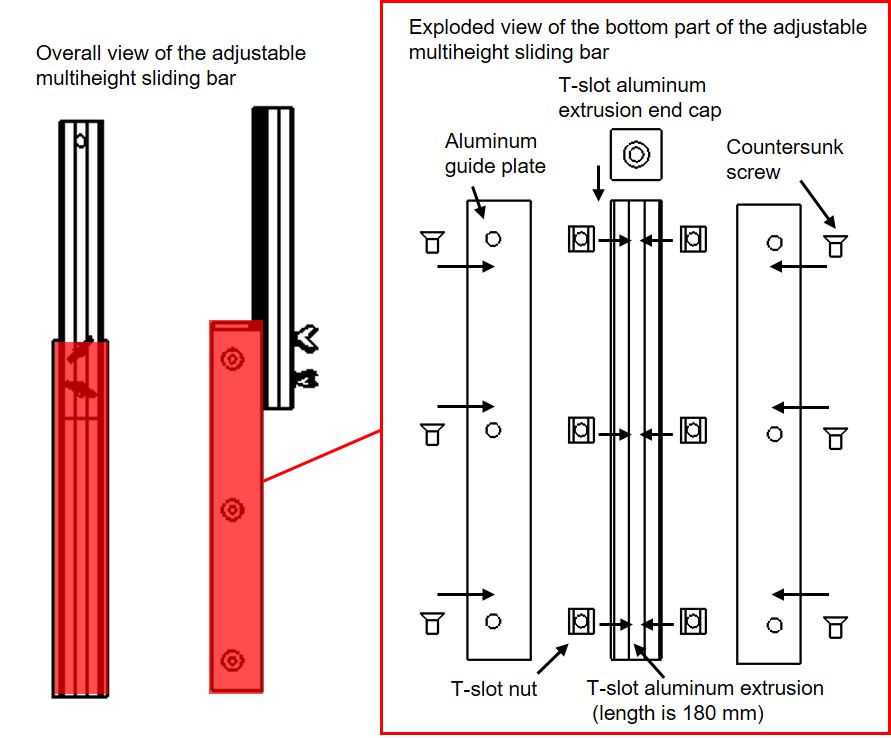
As in the figure below slide and insert two T-slot nuts into T-slot aluminum extrusion (length is 180 mm). Two wing bolts are tightened into a T-slot nut. The T-slot nut moves flexibly in the rail of the T-slot aluminum extrusion (length is 180 mm); therefore, the T-slot aluminum extrusion can be fixed at any position. When the two wing bolts were loosened, the sliding bar moved upward and downward.
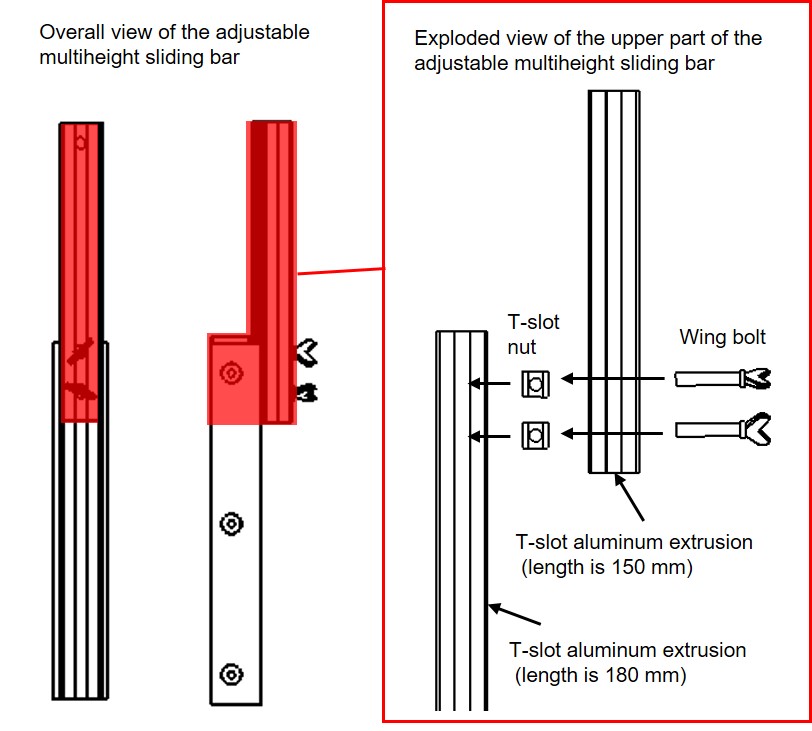
Fabricating the base plate and Building the adjustable multiheight smartphone stand
The upper stage is maintained in a horizontal position, and the bolt is tightened into a T-slot nut using a 4-mm hexagonal wrench. The T-slot nut moves flexibly in the rail of the T-slot aluminum extrusion; therefore, the upper stage can be fixed at any position. Ensure that the washer has been inserted.

Operation instructions
A tabletop smartphone holder was fixed to the upper stage using cable ties or tape. The stand was subsequently placed on a stable surface. The mounting position of the upper stage was determined according to the height and shape of the microscope, and fixed with a hexagonal wrench. The length of the sliding bar is adjusted using two wing bolts. After adjusting the height, the angle of the commercially available smartphone stand was adjusted along with the distance between the smartphone camera and eyepiece of the microscope.
Demonstration of the fabricated stand using various situations
Images were captured and displayed using different microscopes, smartphones, and situations (Figure (a) and (b)). We used a commercial tabletop smartphone holder, which is an adjustable multiangle type, on the upper stage of the stand.
We observed fluorescent dye-stained NIH/3T3 cells using a fluorescence microscope (BX51, Olympus Corporation, Japan ) and an Android smartphone (Xperia 10 II, Sony Corporation, Japan) at the Biological Laboratory of Akita University (Figure (a)). Cultured NIH/3T3 cells on a cover glass were stained with fluorescein diacetate).
In addition, we used a stereomicroscope (S6D, Leica Microsystems, Germany) and an Android smartphone (arrows F-02L, FCNT Ltd., Japan) to observe the metal ruler in the metal factory at the National Institute of Technology, Kumamoto College, Japan (Figure (b)).
